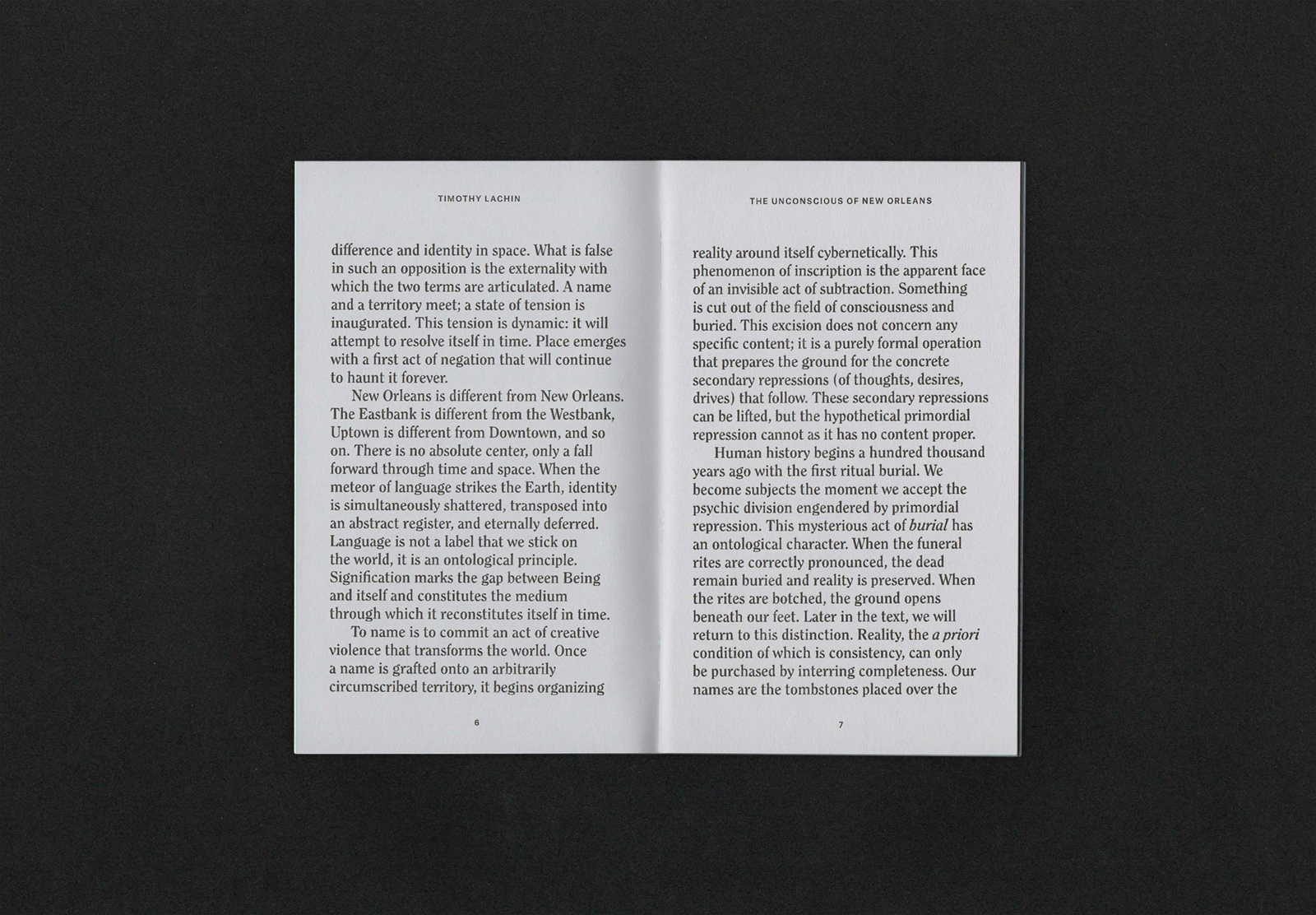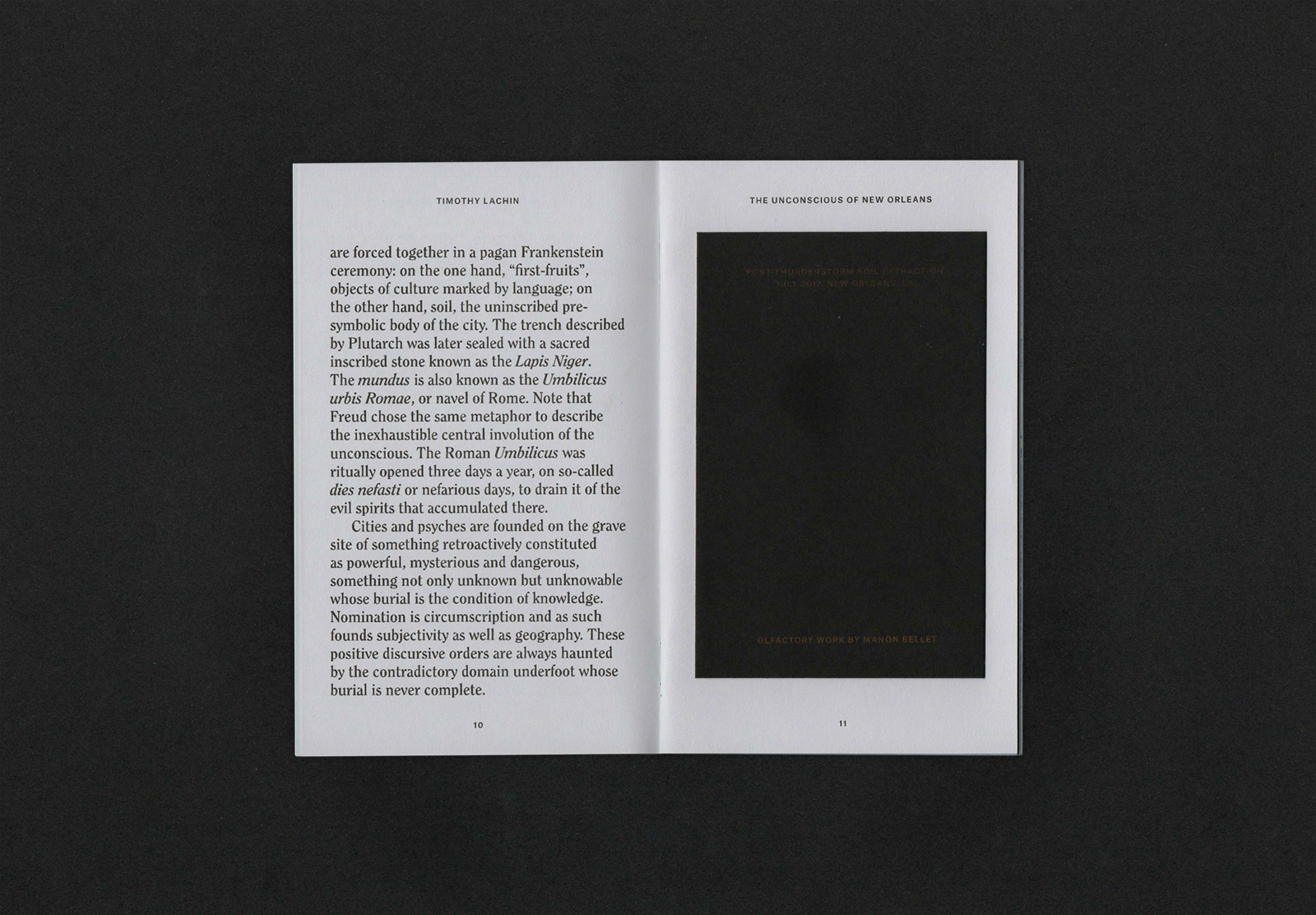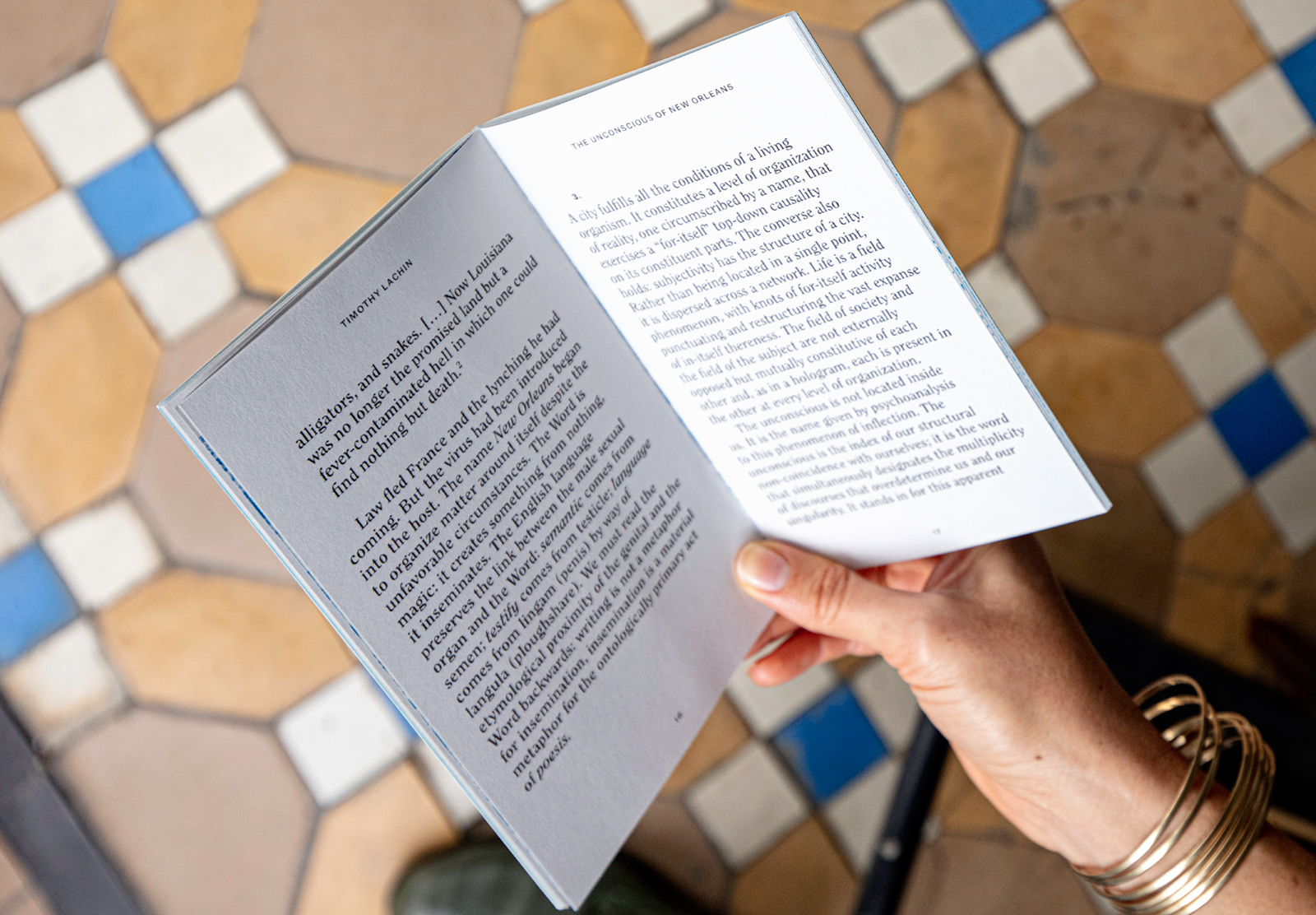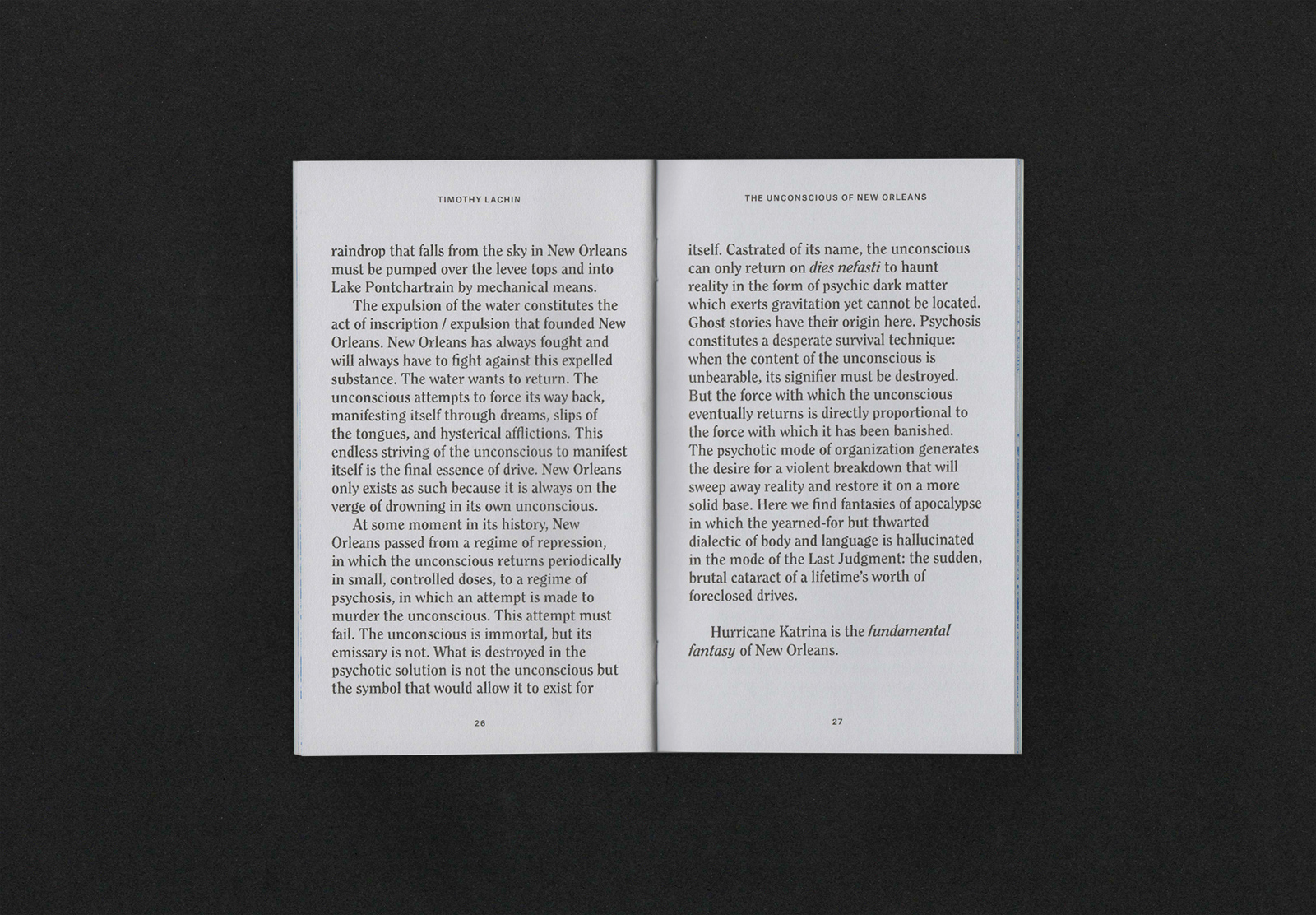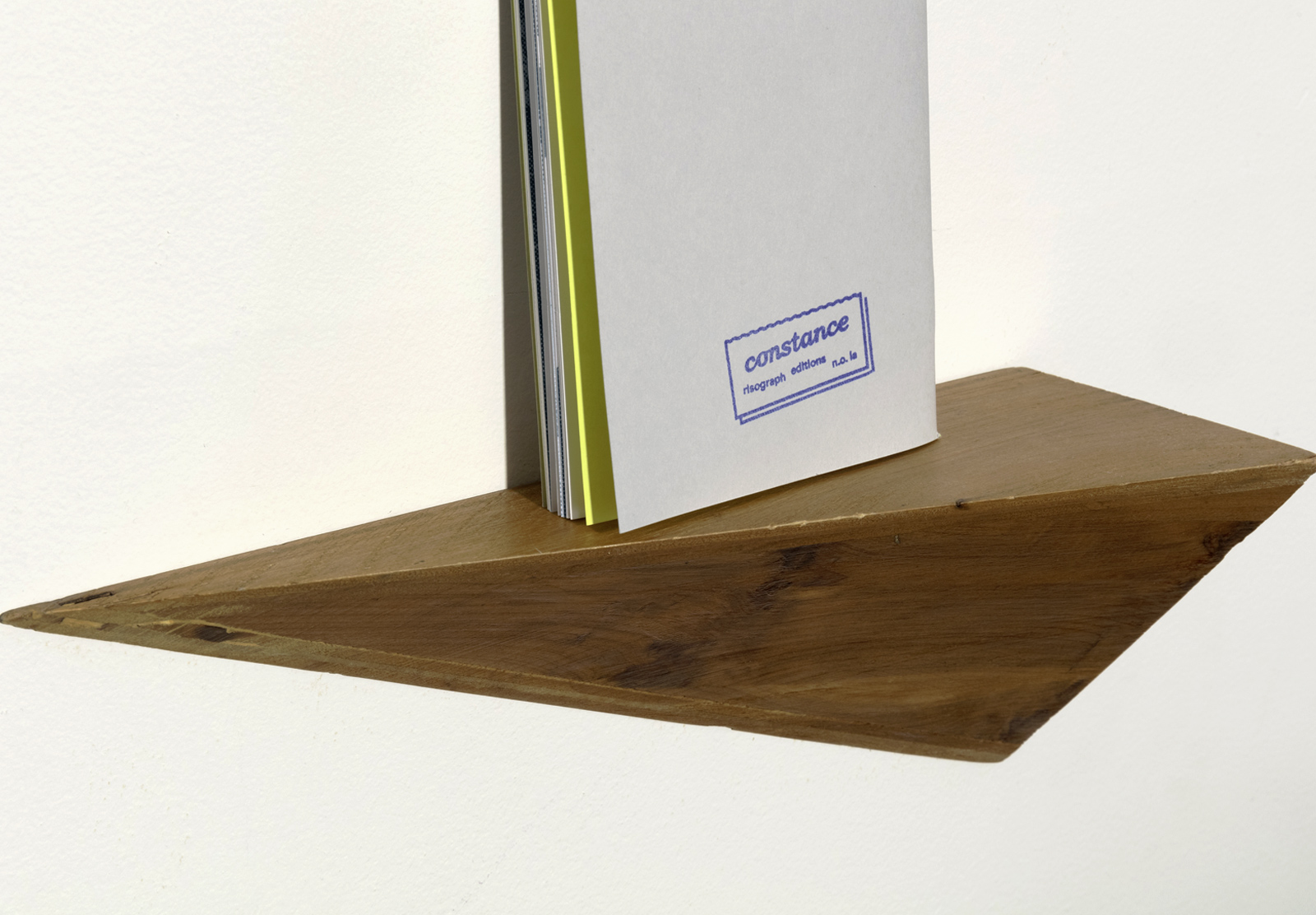A loose trade paperback self-published series New Orleans takedowns that began a few years back. It was intended to be a ‘trilogy of darkness,’ however the final piece of the series has eluded me. How does one end it poignantly? Maybe best to leave it an unfinished project, much like our fair city.
Text: James K. Glassman
iveseenthefuture.persona.co
36 Page
Trade-paperback
2-color Risograph edition of 150
Now in its sixth printing
Book-printing produced in-house.
These two publications, one a take-down article from the Atlantic in 1973, and the other written by a friend who shares similar sentiments, explore different points of time within the New Orleans landscape—conceptually approaching them to allow us to rethink about less common tropes of what people feel our city is, and isn’t, or ever was.
I had been drawn to the trade paperback dimension for quite some time and it seemed fitting for these simple readers, containing New Orleans images of yesteryear. I appreciate the constraints of the size and how images and text can interplay with one another at a similar scale.
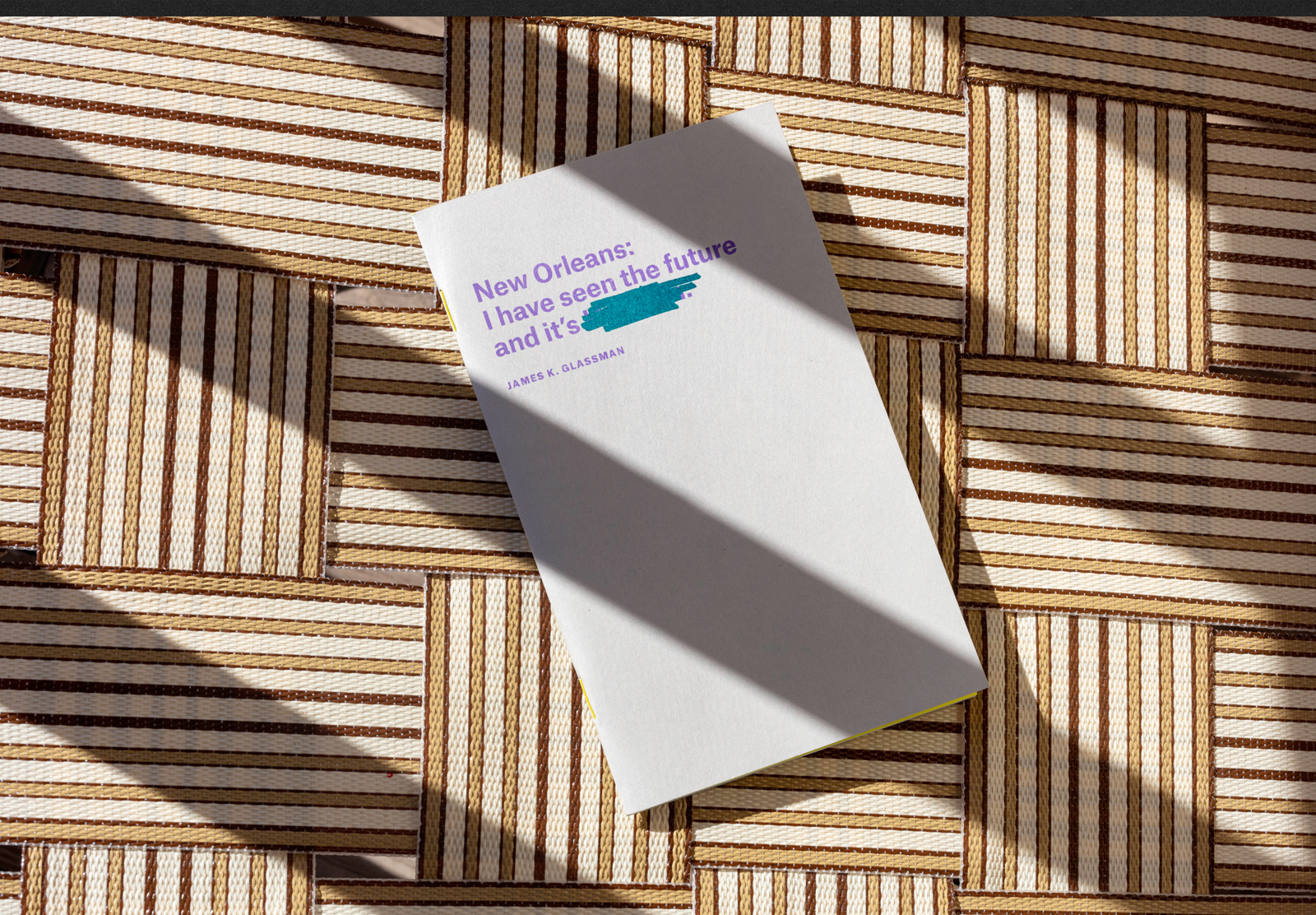
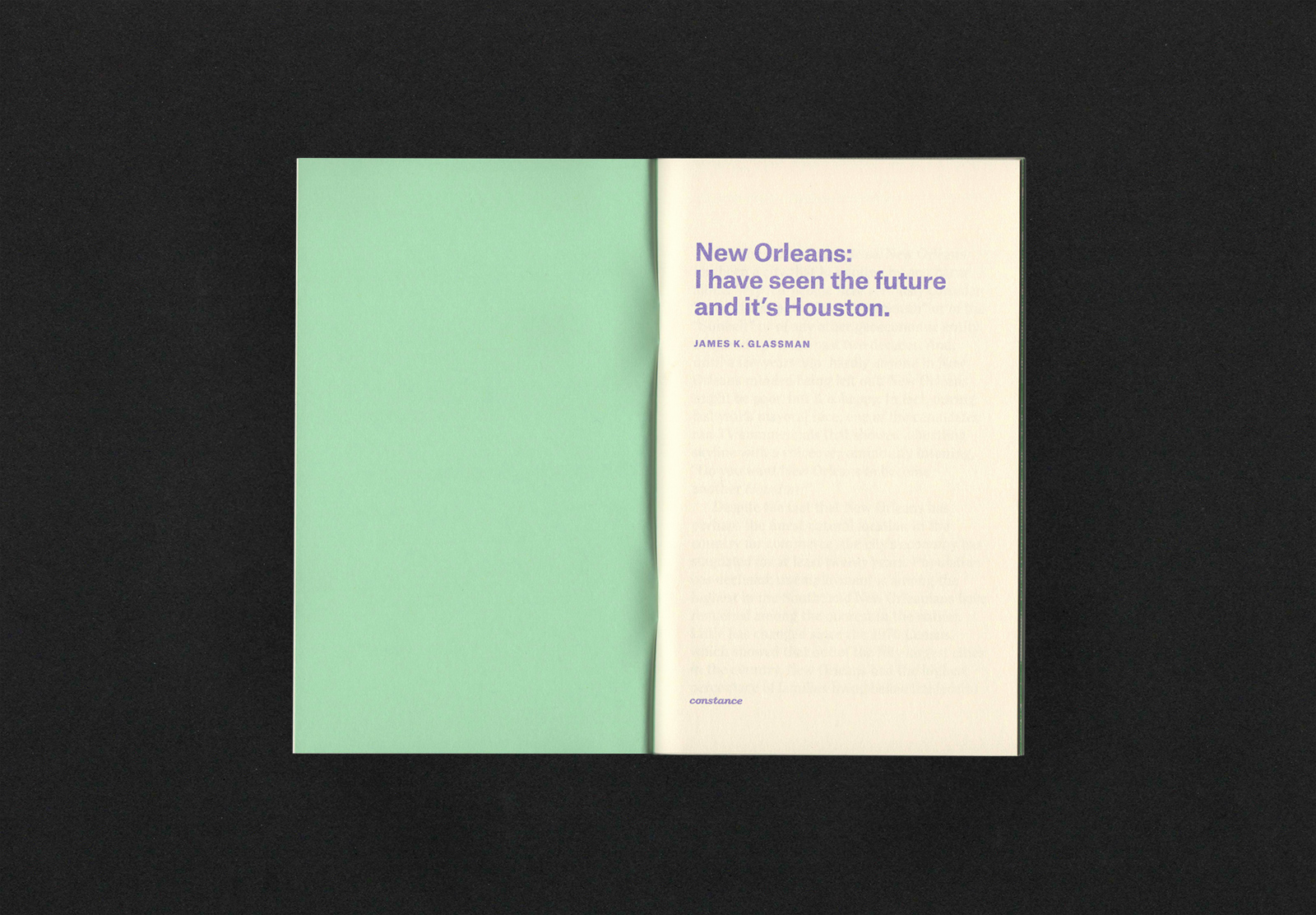
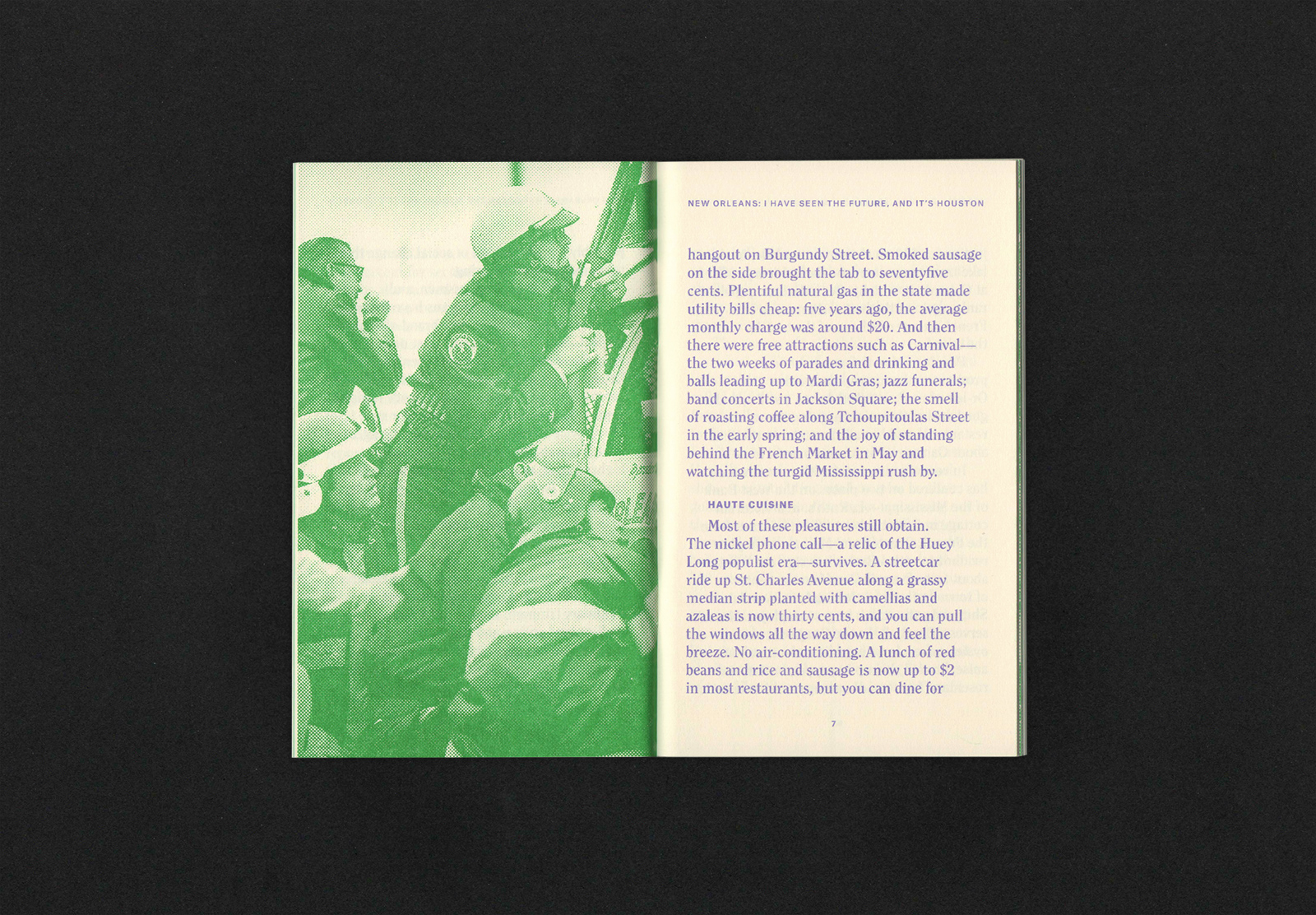
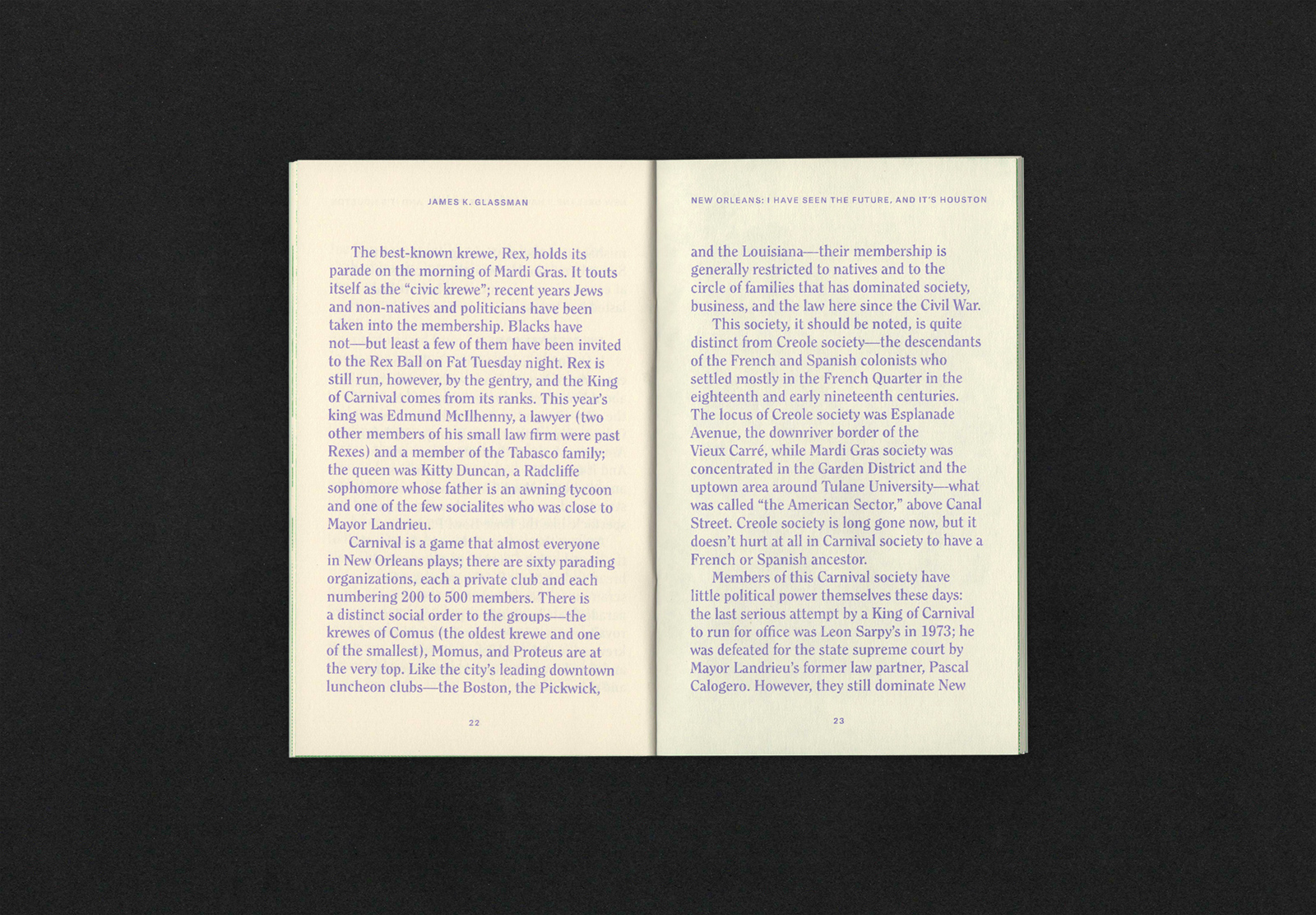

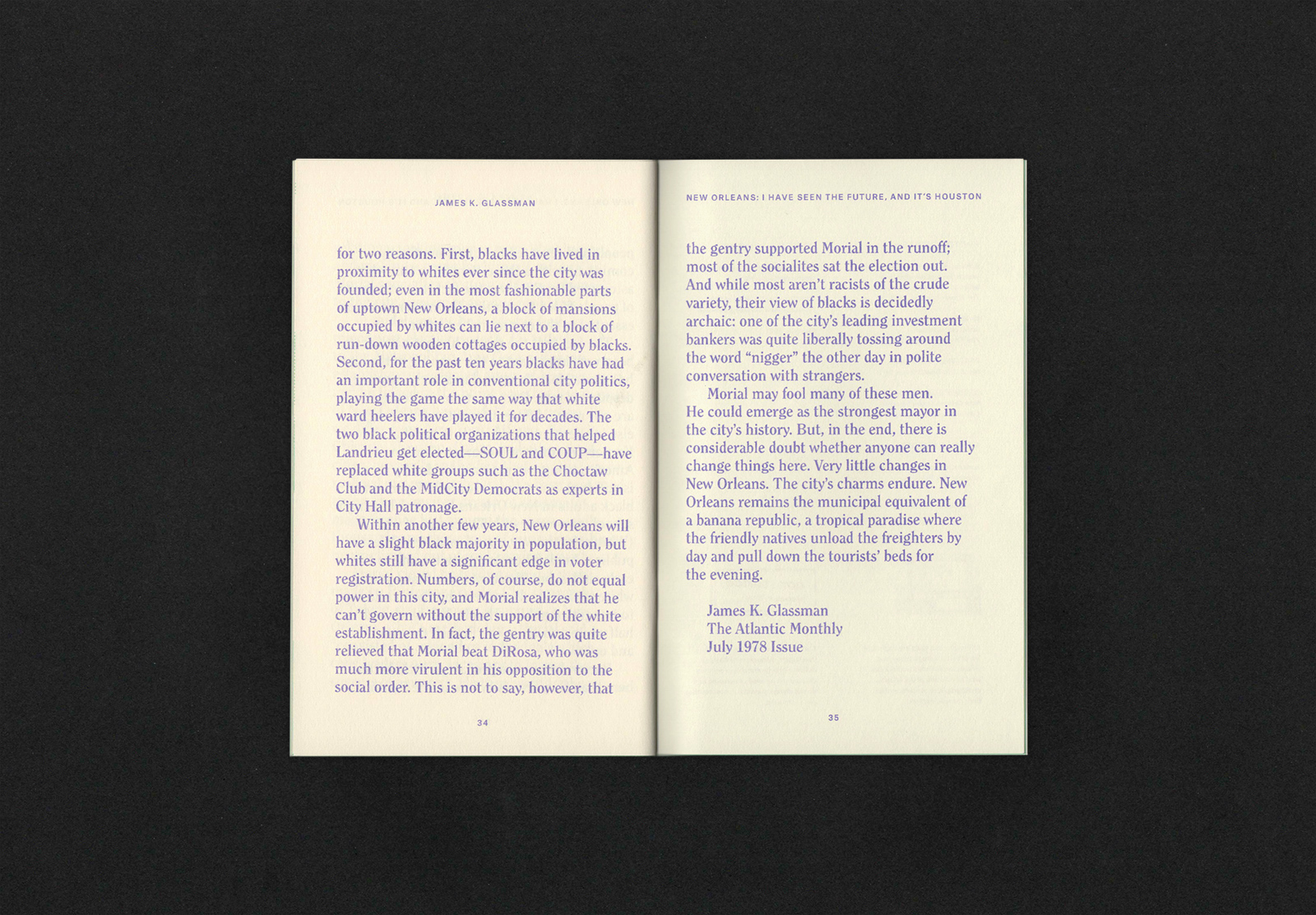


Text: Timothy Lachin
36 Page
Trade-paperback
2-color Risograph edition of 200
Special scented edition of 50
Book-printing produced in-house.
The second in the series, The Unconscious, took a more academic tongue in cheek look at the city. While it didn’t have the ease of entry that the first of the series did, the publication did give a heady psycho-analytical insight around its creative hypothesis. Lachin’s style of writing is direct, off-putting, contrarian, and particular, which is what drew me to his work in the first place.
What made this one quite interesting was the investigation of ‘book as object.’ A special edition of 50 were produced in collaboration with artist Manon Bellet to produce a scent that would attempt to capture the essence of New Orleans from this book’s perspective. The book would have the smell of sitting water and dirt after a heavy rainstorm—a decay of sorts, emblematic of New Orleans itself, in its founding and currently.
